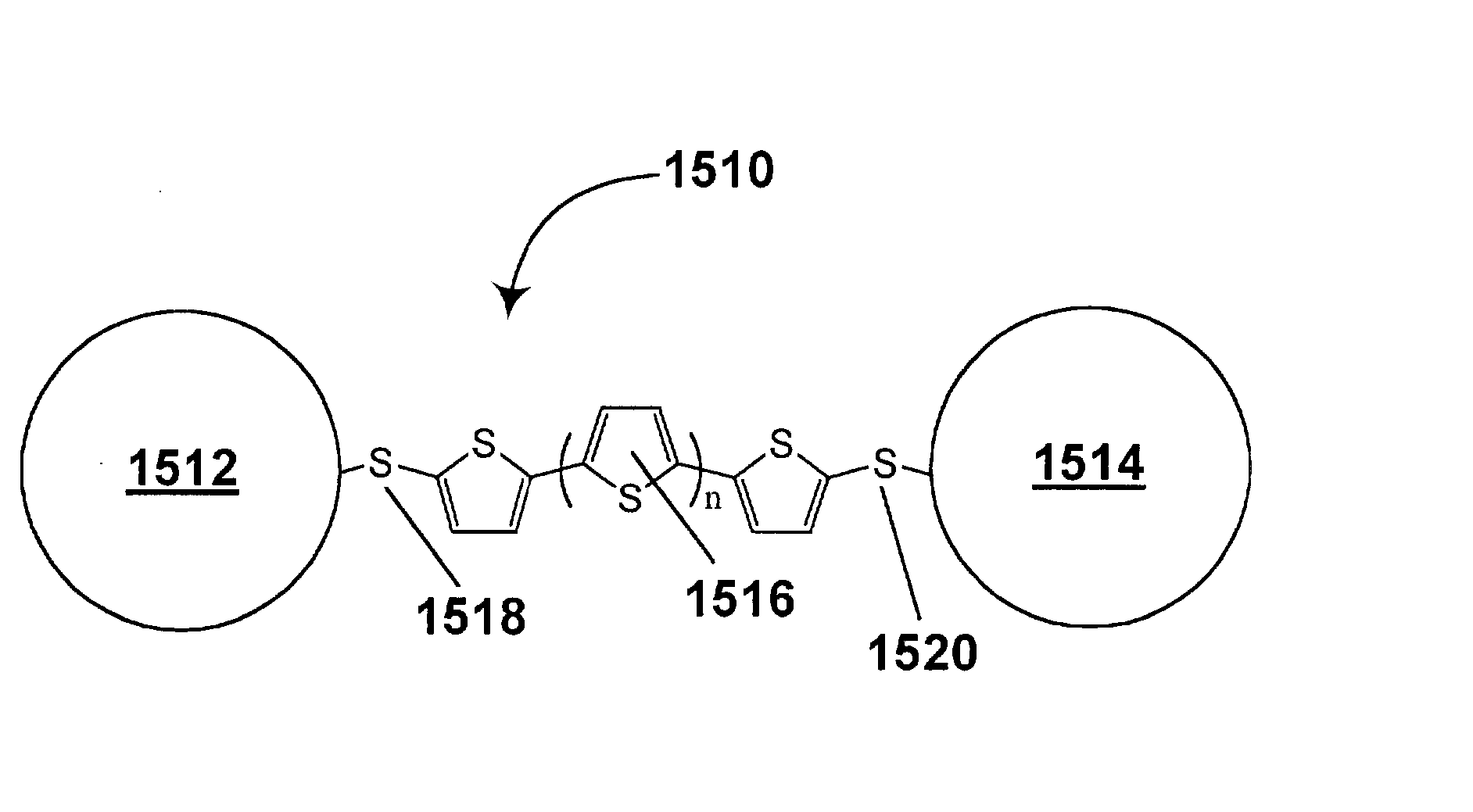Electrophoretic displays using nanoparticles
a technology of electrotrophoretic displays and nanoparticles, applied in the direction of conductive pattern formation, input/output processes of data processing, metal pattern materials, etc., can solve the problems of long image quality, inadequate service life of these displays, and display can only produce two colors, so as to minimize parallax problems and control color saturation
- Summary
- Abstract
- Description
- Claims
- Application Information
AI Technical Summary
Benefits of technology
Problems solved by technology
Method used
Image
Examples
example 2
[0262] This Example illustrates a process of the invention for the synthesis of silver nanoparticles.
[0263] An aqueous silver nitrate solution (34.5 mL of a 0.036 M solution) were combined with a chloroform solution of tetrabutylammonium bromide (25.2 mL of a 0.39 M solution) and stirred for one hour. The organic phase was separated from the aqueous phase and hexanethiol (0.8 mL) was added. The resultant solution was stirred for one hour, sodium borohydride (27.5 mL of a 0.43 M aqueous solution) was added and the resultant mixture stirred for a further 12 hours. The resultant chloroform / silver nanoparticle phase was washed three times with ethanol to remove TBAB, excess hexanethiol and reaction products to produce a silver nanoparticle suspension useable directly in other processes of the present invention.
[0264] The present invention also provides additional processes for "driving" (i.e., bringing about the color change) in some of the types of nanoparticle-based display media desc...
PUM
| Property | Measurement | Unit |
|---|---|---|
| length | aaaaa | aaaaa |
| diameter | aaaaa | aaaaa |
| diameter | aaaaa | aaaaa |
Abstract
Description
Claims
Application Information
 Login to View More
Login to View More - R&D
- Intellectual Property
- Life Sciences
- Materials
- Tech Scout
- Unparalleled Data Quality
- Higher Quality Content
- 60% Fewer Hallucinations
Browse by: Latest US Patents, China's latest patents, Technical Efficacy Thesaurus, Application Domain, Technology Topic, Popular Technical Reports.
© 2025 PatSnap. All rights reserved.Legal|Privacy policy|Modern Slavery Act Transparency Statement|Sitemap|About US| Contact US: help@patsnap.com



